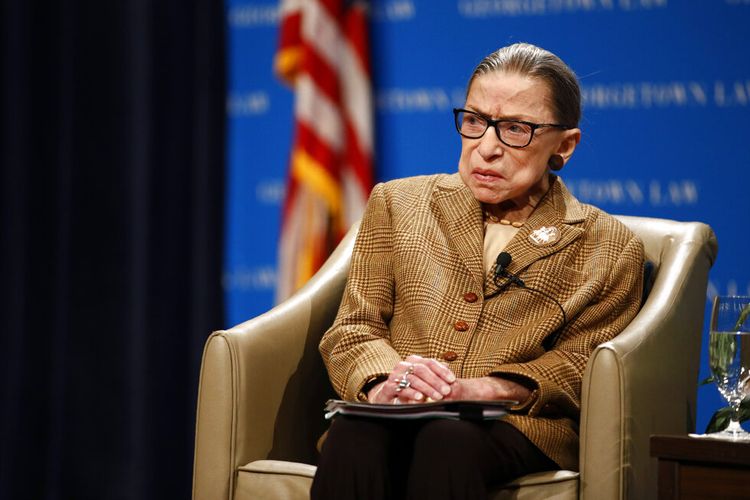Ruth Bader Ginsburg Updates Public on Her Cancer Diagnosis

WASHINGTON, KOMPAS.com — Justice Ruth Bader Ginsburg revealed the return of her cancer and that she was undergoing chemotherapy to treat the disease.
Although Ruth Bader Ginsburg has been extremely upfront about sharing her many health issues with the public, she waited over four months to share the latest health update.
The Supreme Court member as well as other members of the court have been out of the public eye since March due to the coronavirus pandemic.
That’s when they decided to close the building except for official business, then later postponed arguments and agreed to meet by telephone.
In some ways, the court was more accessible to the public than ever with its decision to provide live audio of telephone arguments in May.
But the inability to see the justices and, after arguments concluded on May 13, hear them, made what went on in the late spring and early summer even harder to read than usual.
In an institution that zealously guards the justices’ privacy, only a justice can decide when an injury or illness should be made public. And because life tenure comes with the job, it’s also up to them alone to decide when to retire.
Ginsburg, who was in and out of the hospital last week, said she intends to remain on the court, a decision that likely was influenced by the conservative nominee President Donald Trump would put up to replace her if she were to retire.
“If there is one iron rule that the court tries to follow more than any other, it is that the justices do all that they can to protect their institution from political attacks during presidential election years when public scrutiny of government is heightened. Ginsburg may simply be trying, to the extent she can, to protect the court and herself, from becoming a campaign issue in 2020,” said Artemus Ward, a political scientist at Northern Illinois University who has written about the politics of court retirements.
Ginsburg started receiving chemotherapy in May, a time of year when the justices typically take the bench at least once a week to announce decisions, and when the public can observe them in the courtroom.
Similarly, Chief Justice John Roberts suffered a forehead injury that required stitches on Father’s Day. In a normal year, the court would have met in public the next day and Roberts' wound would have been easy to see.
Instead, opinions were released electronically, as they were throughout the spring and early summer.
Only after inquiries from The Washington Post did the court confirm that Roberts had taken a fall that kept him in the hospital overnight.
Ginsburg issued a statement on July 17 saying that a medical scan in February revealed lesions on her liver, which a subsequent biopsy determined were cancerous.
She declined an interview request from The Associated Press.


































